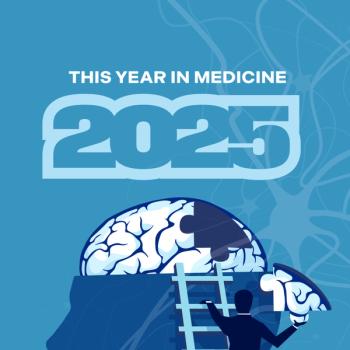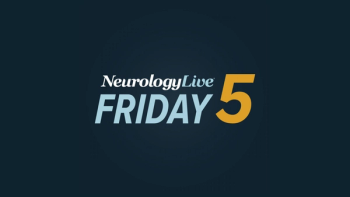
Acute Stroke Therapy LT3001 Eyes Phase 3 Studies Following Positive Phase 2b Data
Key Takeaways
- LT3001 met its primary endpoint in AIS patients, showing no treatment-related sICH and positive functional improvement trends.
- The drug demonstrated a 7.3% higher rate of functional independence at 90 days, with consistent efficacy across subgroups.
New clinical trial results show LT3001's promise in treating acute ischemic stroke, demonstrating safety and improved patient outcomes without complications.
Recently announced data from a phase 2b clinical trial revealed that investigational LT3001 (Lumosa Therapeutics), an antioxidant small molecule conjugated to a short peptide, met its primary end point in patients with acute ischemic stroke (AIS), with no symptomatic intracranial hemorrhage (sICH) occurring. These data, presented at the 17th World Stroke Congress, further support the drug’s development in phase 3 confirmatory trials of AIS.
Led by Yongjun Wang, MD, a professor of neurology at Beijing Tiantan Hospital, treatment with LT3001, or intravenous odatroltide, led to no treatment-related sICH in addition to positive trends in functional improvement relative to placebo. Using modified Rankin Scale (mRS), patients on the drug achieved a 7.3% higher rate of functional independence, defined as mRS scores of 0-2, at 90 days. More notably, the positive data was seen across a number of different subgroups, reinforcing the drug’s efficacy as a treatment for AIS.
"LT3001 combines both thrombolytic and neuroprotective mechanisms," Shuya Li, chief neurologist at Beijing Tiantan Hospital, said in a statement. "The Phase 2 results demonstrate strong potential, and we look forward to the Phase 3 trial further confirming its clinical benefits."
Conducted across 34 medical centers in China, data from the phase 2 study, also known as LT3001-202, revealed slight better results in less severely impacted patients. Among those with moderate strokes (n = 166), investigators recorded a 9% improvement in both mRS 0-1 and mRS 0-2 scores, whereas those categorized with severe stroke (n = 59) had less pronounced, but still positive, trends across these outcomes (mRS 0-1: +4%; mRS 0-2: +12%).
Among those with large artery atherosclerosis (LAA; n = 169), a form of ischemic stroke or vascular disease caused by atherosclerotic plaque buildup, there was a 9% increased rate in mRS scores of 0-1 and a 11% higher rate of those with mRS 0-2. Furthermore, among Among patients with disabling strokes, those with arm motor drift (n = 91) showed a +24% improvement in mRS 0–1 and +21% in mRS 0–2, while those with leg motor drift (n = 110) demonstrated a +14% improvement in mRS 0–1 and +12% in mRS 0–2.
READ MORE:
LT3001, which has been in development for a number of years, works by enhancing the binding of plasminogen to fibrin clots, promoting local conversion to plasmin and thereby facilitating endogenous fibrinolysis at the site of vascular occlusion. Simultaneously, it incorporates antioxidant/anti-reperfusion injury properties to protect brain tissue beyond simply restoring flow.
In an additional phase 2 study presented at WSC 2025, LT3001 continued to meet its primary safety end point, with no treatment-related sICH observed in study participants. Using a cohort of 88 patients from the US, EU, and Taiwan, investigators recorded +7% and +10% improvements in mRS 0-1 and mRS 0-2, respectively, at 90 days, through LT3001. Among patients receiving the high dose, those with disabling strokes featuring arm motor drift (n = 22) showed a +13% improvement in mRS 0–1 at day 90, while those with leg motor drift (n = 17) demonstrated a +14% improvement.
"LT3001 represents a completely novel drug design in stroke treatment—combining thrombolytic and neuroprotective properties into a single agent,” principal investigator Thomas Devlin, MD, PhD, professor of neurology, University of Tennessee Health Science Center, said in a statement.1 "The positive results of this trial across numerous endpoints are particularly exciting given the unique efficacy and safety advantages of this compound within an extended treatment window."
In 2021,
REFERENCES
1. LUMOSA THERAPEUTICS ANNOUNCES POSITIVE RESULTS FROM LT3001(INTRAVENOUS ODATROLTIDE) PHASE 2B CLINICAL TRIAL IN ACUTE ISCHEMIC STROKE. News release. Lumosa Therapeutics. October 28, 2025. Accessed November 4, 2025. https://www.prnewswire.com/in/news-releases/lumosa-therapeutics-announces-positive-results-from-lt3001intravenous-odatroltide-phase-2b-clinical-trial-in-acute-ischemic-stroke-302596484.html
2. Lumosa Therapeutics announces positive results from LT3001 phase 2a clinical trial in acute ischemic stroke. News release. Lumosa Therapeutics. August 3, 2021. Accessed November 4, 2025. https://www.prnewswire.com/news-releases/lumosa-therapeutics-announces-positive-results-from-lt3001-phase-2a-clinical-trial-in-acute-ischemic-stroke-301347227.html
Newsletter
Keep your finger on the pulse of neurology—subscribe to NeurologyLive for expert interviews, new data, and breakthrough treatment updates.




















